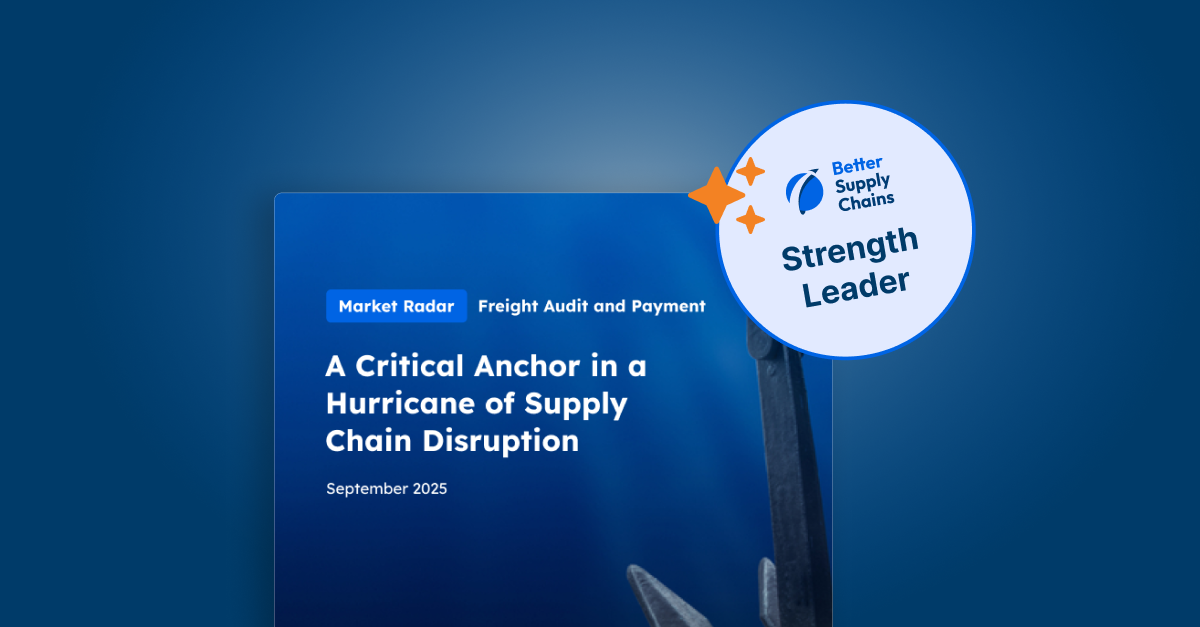A Freight & Shipping Audit Checklist Guide

With increased e-commerce shipping, high consumer expectations for delivery, and challenges in the supply chain, companies need optimized transportation systems and freight services. One of the fundamental ways to achieve this is through collecting and analyzing data — which can, in part, be done through a regular freight audit. Quality, relevant shipping data shows what is going right and needs improvement for better shipping services.
Consistently carrying out freight audits allows one to collect data from shipping invoices. Over time, freight audits have become more comprehensive and focus more on analysis, making it easier to use the data to improve processes and business decisions. Freight audits can improve visibility into the supply chain, the accuracy of payments, and more.
This guide gives you an actionable freight audit checklist to follow.
Types of Freight Audit
Shippers can pick from one of three methods of auditing a freight bill:
In-house Manual Audits
Auditing manually has been a traditional way of carrying out this process.
- Best for: Small shippers
- Pros: Someone in-house manages & audits invoices; no added expense..
- Cons: Slow, monotonous process, prone to human error; adds to an already burdensome workload.
Freight Invoice Audit Software
Your in-house team uses cutting-edge software to audit invoices, track payments, and collect and analyze related data.
- Best for: Medium-size shippers
- Pros: Easily and efficiently audit invoices; machine learning identifies anomalies and errors a human is likely to miss or take a long time to catch.
- Cons: Additional costs to license the software and train staff.
Outsourced Audits
This method hands off the audit and analysis process to a third-party partner with the expertise and trustworthiness to best manage the process.
- Best for: Medium-to-large shippers
- Pros: No need to purchase or license a freight audit system; reallocate staffing resources to core business duties; reviewing and analyzing invoices and recouping costs occurs regularly.
- Cons: Added costs for outsourcing.
Freight Audit Checklist
Whether you have a single person or small team taking care of auditing internally, you're using software to manage the process, or your company is outsourcing audits to a third party, an invoice audit checklist is pretty similar.
Collect Invoices
It's best to have a system in place to log and upload invoices as they come throughout the year. If you haven't been doing that so far, start this continuous process now and also collect and log the past year's invoices. Keep in mind that the claim window is generally 180 days.
Categorize Expenses
After logging invoice data, categorize it by breaking it down by vendor and date range. Look at the vendor information to compare new charges with old ones, which helps you notice and analyze whether shipping costs have increased, decreased, or mainly stayed the same.
Determine Benchmarks
Categorized data is the basis for further analysis. At this point, setting up benchmarks reveals how well the numbers match the standards. You can analyze expenses, usage goals, reduction goals, or whatever benchmarks are relevant to your needs.
Check for Rate Issues
A primary component of the shipping audit checklist is checking the invoice data for errors and overcharges. Review the information to check for numerous ways carriers could have overcharged you or made a billing mistake.
Common rate issues on invoices include:
- Duplicate Charges — A carrier may have made a mistake that resulted in one shipment being counted as multiple or another issue. These types of problems cause duplicate charges. Your audit should look for these to notice and avoid paying for duplicate charges. Look for signs that include identical or almost identical expense amounts, invoice numbers, and vendor numbers.
- Accessorial Fees — Commonly added to shipping invoices, these fees are often complex and differ from one carrier to the next. In addition, carriers charge them after the fact. These circumstances make them difficult to track. Nonetheless, you can make sure the accessorial fees match the contract you have with the carrier and that the fees match the services provided.
- Late Deliveries — Many shipments include a designated time frame for delivery. When the delivery is late, you can often receive a reduced rate or have the charges voided, depending on the carrier and contract. Track for late deliveries and take steps to notify of the problem.
- Discounts — Double-check that promised discounts were applied to the applicable freight invoices.
- Freight Classification — Freight in certain classifications costs less than others. Ensure that your freight was put into the proper categories and priced appropriately. Alert the carrier of mistakes resulting in overcharges.
- Taxes — Track the taxes applied to your goods to ensure they follow the correct tax laws and regulations.
Review the Current Rate of Service
The next step is to total the costs of potential errors to determine whether billing is at the correct rate and includes applicable discounts.
Use Freight Payment
The way you pay can play a part in freight audits. Freight Payment is a platform that helps collect accurate information on invoice payment history, service issues, and other relevant data. It provides transparent invoice information for both shippers and carriers. It enables contractual audits across extensive data points.
Analyze the Data
Consider the types of data points to include in an audit. Think of data that helps with goals like reducing costs, streamlining processes, and making decisions.
Here are good data points to include in an invoice audit checklist:
- Drastic or Unexpected Price Increases. Shipping prices tend to be volatile and impacted by many factors. Therefore, it's critical to be aware of increases and check for hefty price hikes. Talk with the carrier about sudden or unusual price hikes and check on ways to address them, which could mean comparing with other carriers and modes.
- Forms of Truck Capacity Utilization. Check to ensure that you are using truck capacities that fit each situation, such as full truckload or less than truckload. Optimizing capacity can reduce freight runs and shipping costs.
- Turnaround Times. The time it takes to load and unload goods should be kept low to reduce costs. By checking times, you can identify ways to improve them, use carriers' speed to negotiate future contracts or compare them with other carriers.
Using Technology to Power Freight & Shipping Audits
Advanced technology greatly helps companies carry out their freight audits. Technology takes tedious, time-consuming, and inefficient processes and streamlines them. Not only does technology make collecting data easier, but it also simplifies the processes of tracking, analyzing, creating reports, and carrying out audits. Using the right technology should be part of every good shipping audit checklist.
Freight audit technology can take over to automatically carry out processes related to audits and recovery. Machine learning processes massive amounts of data independently and accomplishes anomaly detection, finding mistakes, overcharges, and such that occur within invoices. It achieves this goal much faster and better than humans can.
This technology works even better than periodic freight audits because it continuously checks data in real-time, catching problems faster and allowing your company to resolve them as quickly and best as possible. The sooner you make a claim or communicate with the carrier, the more likely you will fix the problem effectively.
You can also use freight technology to carry out freight audits anytime you choose, and the data is accessible whenever you need it. You gain access to more high-quality data through integration across systems and can improve collaboration between departments, companies, and carriers.
Also, a tech-based freight audit and recovery service can automatically start the recovery process when an audit uncovers discrepancies.
Stay on Top of Invoices
By failing to collect and track invoice data, shippers can miss out on mistakes and changes that add up to high costs. Using a freight audit checklist like the one above helps you keep up with those invoices and analyze the data contained within them.
While small shippers can often get by with manual audits, a larger or growing company needs more support to keep up with the continuous invoices and discrepancies they contain. Technology and third-party audit support can take over this burden to provide an efficient process that more easily catches problems and recovers associated costs.



